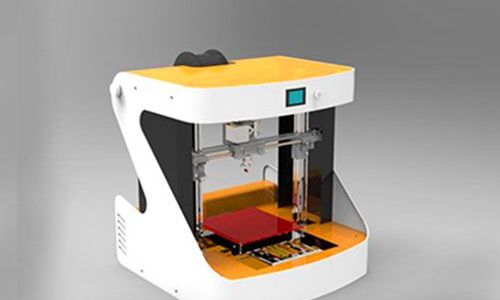D. F. Treffer, J. G. Khinast Many industrial polymer processing operations (e.g., extrusion, injection molding, etc.) include solid-to-liquid or liquid-to-solid phase changes at non-isothermal interfaces. Stickiness (tack) can occur depending on the process conditions. However, prediction of tack formation is not trivial. This work presents a hypothesis for tack formation between molten polymers and solids under non-isothermal conditions. Our hypothesis states that strong adhesion requires wetting (and thus surface creation) at the interface upon contact and, consequently, contact temperatures above the polymer’s solidification point. Lower contact temperatures result in a solid-solid interface with negligible adhesion. It was suggested that the contact temperature determines the existence or non-existence of surface sticking. The hypothesis was supported by non-isothermal tack experiments, which show that the change from stickiness to non-stickiness is surprisingly pronounced with changing surface temperature of the solid material. From a practical perspective, the work may be useful both for professionals (e.g., designing new processing equipment and performing process troubleshooting) and home users (e.g., working with hot melt glue or 3d printers). Introduction In a typical plastics manufacturing process, polymers are processed in the molten state and then solidified to obtain a final product or an intermediate. For all processes, it is critical to design the equipment in a way that allows control of sticking at defined interfaces. It can be either required or undesir-able at defined non-isothermal interfaces. In 3d printing, polymer welding and hot melt gluing, high levels of adhesion between the structural elements and the adhesive ensure high component strengths. In pelletizing , injection molding and film stretching, sticking should be avoided, since sticking can impair the product’s quality or even lead to production failure. Due to the complexity of the problem, adhesion characteristics are not well predicted in practical situations. Since studies of adhesion are typically performed under isothermal conditions, results are mostly inapplicable to non-isothermal adhesion. In general, adhesion comprises all forces between materials that are in contact. According to the seminal work by McBain and Hopkins], adhesive forces can be attributed to mechanical and specific adhesion. Mechanical adhesion occurs via adhesive interlocking due to the surface roughness of a substrate. Specific adhesion involves all forces occurring between perfectly flat surfaces without pores or a surface roughness based on molecular interactions. When an adhesive bond is exposed to mechanical stress, forces transferred through the interface lead to a deformation of the substrate materials and the adhesive. In that regard, one distinguishes between fundamental adhesion, which relates only to forces acting on the molecular level between the contacting phases, and practical adhesion, which is a measure of the total force that disrupts an adhesive bond, and includes fundamental adhesion and all other energy-dissipating processes during bond breaking. As such, practical adhesion is meaningful only in a specific geometry. The resistance of an adhesive bond to debonding (or bond breaking) after short contact times is termed tack (stickiness) and is pronounced for pressure sensitive adhesives (PSAs). Tack requires the right balance between the softness (low storage modulus) and ability to dissipate energy of a polymer. Tack is often investigated via probe tack experiments using a polymer melt or, more generally, an adhesive placed on a stationary plate and a vertically movable cylindrical probe on top. The experiments have two phases. First, during the bonding phase, the probe is pressed against the melt, allowing the material to wet the surface and form an adhesive bond. Second, during the debonding phase, the probe is detached under controlled conditions. The resulting force-path measurements provide information about the adhesion, cohesion, flow regime and tack failure mechanism. Isothermal tack behavior is predicted via the Dahlquist criterion , which states that at storage moduli below a certain threshold (G’<3∙105 Pa at a frequency of 1 s-1) tack (stickiness) is observed. One obvious requirement for tack is that two materials wet on contact. Most tack studies are performed under isothermal conditions, investigating the effects of contact time, contact pressure, temperature, rheology, separation velocity and surface roughness. However, since polymer processes are generally conducted under non-isothermal conditions, it is also critical to understand the mechanism of non-isothermal tack. In our work we describe the effect of nonisothermal conditions on tack by analyzing the heat transfer and developing a detailed contact temperature tack hypothesis. To the best of our knowledge, no controlled nonisothermal tack investigations have been described in the literature to date. Source:TPE Magazine
